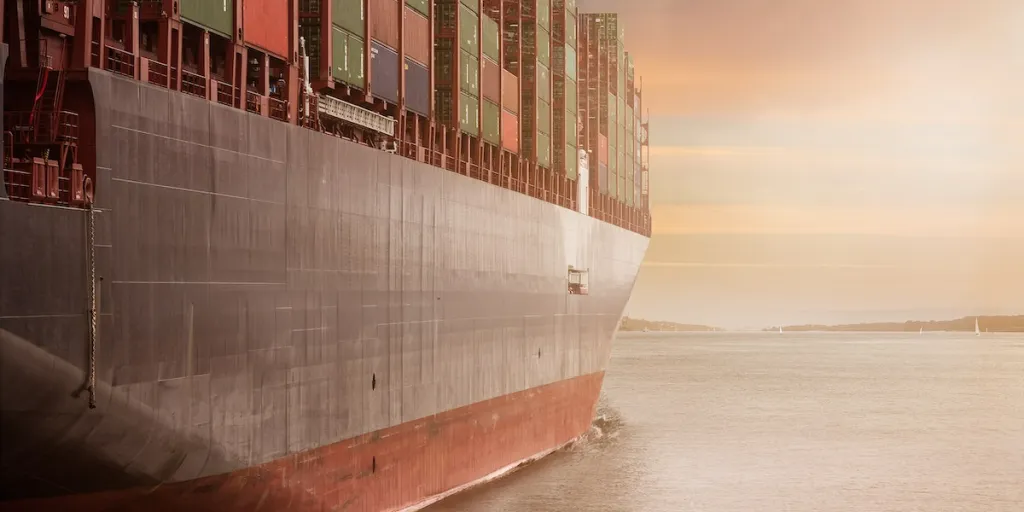As we stepped into 2023, hopes were high. Thanks to the gradual easing of the pandemic, a sigh of relief ascended globally – things were looking up. The global supply chain, the invisible conveyor belt of goods we rely on daily, was expected to find its balance again and proceed with renewed energy.
Fast-forwarding to 2024, however, the picture starts to get a bit complex—it seems we’re now staring down the barrel of a whole new set of supply chain challenges. Today’s blog post will shed light on five of the top supply chain issues that will dominate in 2024. Keep reading to find out how businesses can prepare themselves for these supply chain challenges!
Table of Contents
What are the top 5 supply chain issues in 2024?
Navigate supply chain issues with proactive planning
What are the top 5 supply chain issues in 2024?
In 2024, supply chains are going to be more complex, more interconnected, and more global than ever before. At the same time, they will be more vulnerable to disruptions. So, without further ado, here are five of the biggest supply chain issues that businesses will face in 2024:
Material scarcity

Materials used by manufacturing companies to produce goods are becoming increasingly scarce, as they are being depleted from natural resources at a much faster rate than they can be replaced. A notable example is the scarcity of key materials to make components for semiconductors and computer chips.
These supply chain shortages are expected to escalate in the upcoming years, causing higher prices and significant delays in production. A report from the World Economic Forum underscores this issue, indicating that companies within the semiconductor industry have significantly increased their production to meet the escalating demand.
In addition to semiconductors and microchips, critical industrial metals such as copper, nickel, aluminum, and rare earth elements—vital for electronics, electric vehicles, and renewable energy technologies—are also projected to become increasingly scarce.
Businesses need to adopt innovative measures to mitigate the consequences of this material scarcity. In addition to seeking alternative sources including those from overseas, strategies could include recycling or reusing existing products, or even complete redesigns of production lines. A good example of this is companies shifting to plant-based packaging instead of plastic.
Customer demand uncertainty
With the ebb and flow of consumer preferences, today’s supply chains are vexed by the task of accurately forecasting what products will be in high demand tomorrow or even a month from now.
This uncertainty, tied intimately to the quicksilver nature of consumer spending patterns and purchasing behaviors, creates a lack of clarity around consumer demand and can lead to avoidable costs for businesses that find themselves grappling with overstocking and excess storage.
However, the rise of artificial intelligence (AI) and machine learning has opened up new paths for businesses seeking to better understand and predict customer demand. These new technologies allow companies to delve into consumer behavior, equipping them with the knowledge to not only fathom past purchasing habits but also anticipate what customers might desire next.
This predictive analysis of data leads to more accurate planning, aiding businesses in circumventing customer demand uncertainty. For example, an intelligent solution like Alibaba Cloud’s Predictive Analytics and Machine Learning (PAML) provides powerful statistical algorithms and machine learning models to help companies make strategic decisions about their inventory based on past customer behavior patterns.
Labor shortages

As we peek into the future of 2024, manpower scarcity looms large as one of the dominant supply chain challenges. This talent shortage is in part due to the rising aging population and shifting immigration policies, which make the task of finding qualified workers increasingly tough.
Industrial sectors that are more prone to feel the sting of supply chain disruptions—such as durable goods manufacturing, wholesale and retail trade, and health services—might see prolonged labor shortages. Interestingly, a Harvard Business Review report states that filling every job vacancy with an experienced but presently unemployed individual in the durable goods manufacturing sector would still leave about 25% of the job openings untouched.
So, how can companies combat these labor shortages? One potent solution is the investment in the training and upskilling of existing employees. By pouring resources into training programs that bring employees up to speed with new technologies like 3D printing, companies can both bridge the unsettling skills gap and fortify their workforce for the evolving business technology.
Another solution is the adoption of robotics or artificial intelligence for automating tasks. This doesn’t mean replacing humans with machines, but rather using technology to improve and streamline processes based on the data captured in real-time from sensors scattered across manufacturing facilities.
Rising energy costs

The higher costs of energy sources will continue to disrupt supply chain operations, from manufacturing and distribution to transportation. Operating like unseen arteries, fossil fuels ensure the constant flow of goods from producers to consumers.
However, as energy prices fluctuate unpredictably around the globe, the costs associated with the transportation and production of goods can inflate dramatically. This escalation can heavily impact business’ operational costs and, ultimately, their profitability.
Continued price increases in the cost of energy will invariably lead to a corresponding surge in the prices of goods and services. More expensive goods can become less affordable for consumers, potentially reshaping their purchasing habits and leaving businesses grappling with reduced demand.
This can present a significant financial strain, especially to businesses already working with tight margins or those heavily dependent on fuel and energy sources for their operations.
With the energy transition gaining momentum and demands for energy commodities persisting, the World Economic Forum underscores the critical need to reevaluate global supply chains.
Businesses are now prompted to seek innovative ways of delivering goods with less dependency on fossil fuels. These solutions can range from straightforward methods like consolidating shipments to minimize transportation needs (and associated costs), to more substantial investments such as harnessing renewable energy resources like solar panels or wind turbines for manufacturing operations.
Increased cyber-attacks
As companies working in e-commerce adopt digital platforms and new technologies to manage their supply chain operations, they face an inevitable escalation in cybersecurity vulnerabilities. Simply put, as global supply chains become more advanced and digitized, cybersecurity threats become more complex. The consequences may include supply chain disruptions, loss of sensitive data, and financial damages.
A recent report by Kroll in the second quarter of 2023 reinforced these concerns, shedding light on a growing wave of cyber threats. A spike in ransomware and email compromise attacks was highlighted, proving that global supply chains are becoming a preferred target for digital criminals.
Looking ahead, industry experts predict that these menacing cybersecurity threats will gain both in frequency and severity, resulting in an ever-increasing challenge for supply chain safety. However, there are effective ways to mitigate these threats.
One end-to-end security solution is Alibaba Cloud Security service. This comprehensive security service provides an adaptive security architecture, performing continuous monitoring and delivering analytics to protect crucial supply chain data.
Although the total elimination of cyber-attacks is an impossibility, services such as this can offer real-time threat reports and swift recovery from security risks, acting as the digital shield to protect the integrity of supply chain operations in these challenging times.
Navigate supply chain issues with proactive planning
To stay ahead of all these supply chain challenges, it’s crucial for businesses to integrate proactive planning and robust risk management strategies into their operations. While it’s almost impossible to control unexpected issues that might unfold over the next few years, companies can minimize the impact of supply chain disruptions by preparing contingency plans for each possible scenario.
Not sure how to get started with such strategic planning? Check out these five steps to develop your first logistics risk management strategy!

Looking for a logistics solution with competitive pricing, full visibility, and readily accessible customer support? Check out the Alibaba.com Logistics Marketplace today.




